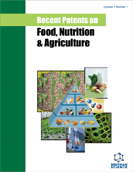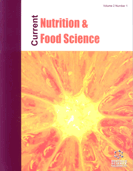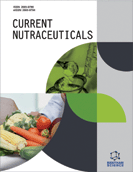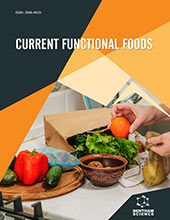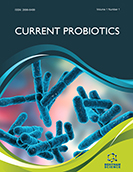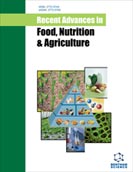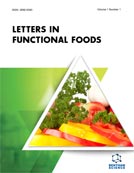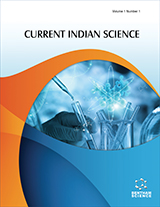Abstract
Many epidemiological studies have provided evidence that a high intake of fruits and vegetables is associated with a reduced risk for the development of cancer and cardiovascular diseases. Fruits and vegetables are known to contain health promoting components such as vitamins, minerals, antioxidants and dietary fibers, however, it is unclear which of these are responsible for the health promoting properties of fruits and vegetables. Aliphatic C17-polyacetylenes of the falcarinol type, which occur in common food plants of the Apiaceae family such as carrot, celeriac, parsnip and parsley, have demonstrated interesting bioactivities including antibacterial, antimycobacterial, and antifungal activity as well as anti-inflammatory, anti-platelet-aggregatory, neuritogenic and serotonergic effects. In addition, the cytotoxicity of falcarinol type polyacetylenes towards human cancer cells, bioavailability, and their potential anticancer effect in vivo indicates that these compounds may contribute to the health effects of certain vegetables and hence could be important nutraceuticals. The bioactivity of falcarinol type polyacetylenes occurring in food plants of the Apiaceae family, their possible mode of action and possible health promoting effects are discussed in this review as well as the effect of storage, processing and other factors that can influence the content of these compounds in root vegetables and products. Moreover, recent patents on bioactivity of falcarinol type polyacetylenes and inventions making use of this knowledge are presented and discussed.
Keywords: Polyacetylenes, falcarinol type, anti-inflammatory, anticancer, bioactivity, bioavailability, extraction, genotypes, processing, vegetables, Potential Health, cardiovascular diseases, Apiaceae, anti-platelet-aggregatory, Neurotoxic, Neuritogenic, Serotonergic Effects, Cicutoxin, Angelica sinensis, Falcarindiol-8-methyl ether, LOX melanoma mouse xenocraft model, ROOT VEGETABLES, Panax, Ginseng, Angelica furcijuga Kitagawa, A. furcijuga, A. cordota
Recent Patents on Food, Nutrition & Agriculture
Title: Aliphatic C17-Polyacetylenes of the Falcarinol Type as Potential Health Promoting Compounds in Food Plants of the Apiaceae Family
Volume: 3 Issue: 1
Author(s): Lars P. Christensen
Affiliation:
Keywords: Polyacetylenes, falcarinol type, anti-inflammatory, anticancer, bioactivity, bioavailability, extraction, genotypes, processing, vegetables, Potential Health, cardiovascular diseases, Apiaceae, anti-platelet-aggregatory, Neurotoxic, Neuritogenic, Serotonergic Effects, Cicutoxin, Angelica sinensis, Falcarindiol-8-methyl ether, LOX melanoma mouse xenocraft model, ROOT VEGETABLES, Panax, Ginseng, Angelica furcijuga Kitagawa, A. furcijuga, A. cordota
Abstract: Many epidemiological studies have provided evidence that a high intake of fruits and vegetables is associated with a reduced risk for the development of cancer and cardiovascular diseases. Fruits and vegetables are known to contain health promoting components such as vitamins, minerals, antioxidants and dietary fibers, however, it is unclear which of these are responsible for the health promoting properties of fruits and vegetables. Aliphatic C17-polyacetylenes of the falcarinol type, which occur in common food plants of the Apiaceae family such as carrot, celeriac, parsnip and parsley, have demonstrated interesting bioactivities including antibacterial, antimycobacterial, and antifungal activity as well as anti-inflammatory, anti-platelet-aggregatory, neuritogenic and serotonergic effects. In addition, the cytotoxicity of falcarinol type polyacetylenes towards human cancer cells, bioavailability, and their potential anticancer effect in vivo indicates that these compounds may contribute to the health effects of certain vegetables and hence could be important nutraceuticals. The bioactivity of falcarinol type polyacetylenes occurring in food plants of the Apiaceae family, their possible mode of action and possible health promoting effects are discussed in this review as well as the effect of storage, processing and other factors that can influence the content of these compounds in root vegetables and products. Moreover, recent patents on bioactivity of falcarinol type polyacetylenes and inventions making use of this knowledge are presented and discussed.
Export Options
About this article
Cite this article as:
P. Christensen Lars, Aliphatic C17-Polyacetylenes of the Falcarinol Type as Potential Health Promoting Compounds in Food Plants of the Apiaceae Family, Recent Patents on Food, Nutrition & Agriculture 2011; 3 (1) . https://dx.doi.org/10.2174/2212798411103010064
| DOI https://dx.doi.org/10.2174/2212798411103010064 |
Print ISSN 2212-7984 |
| Publisher Name Bentham Science Publisher |
Online ISSN 1876-1429 |
 48
48Related Articles
-
Osteoprotegerin and Diabetes-Associated Pathologies
Current Molecular Medicine Novel Therapies Against Aggressive and Recurrent Epithelial Cancers by Molecular Targeting Tumor- and Metastasis-Initiating Cells and Their Progenies
Anti-Cancer Agents in Medicinal Chemistry Oncolytic Coxsackievirus and the Mechanisms of its Effects on Cancer: A Narrative Review
Current Cancer Therapy Reviews HSV Amplicon Vectors for Cancer Therapy
Current Gene Therapy Erythropoietin Withdrawal Leads to the Destruction of Young Red Cells at the Endothelial-Macrophage Interface
Current Pharmaceutical Design Approaches to Improve Efficiency of Dendritic Cell-based Therapy of High Grade Gliomas
Current Pharmaceutical Design The Characteristics, Functions and Inhibitors of Three Aminopeptidases Belonging to the M1 Family
Current Protein & Peptide Science Pharmacological Treatment of Obstructive Sleep Apnea
Current Pharmaceutical Design Oxaliplapin and Capecitabine (XELOX) Based Chemotherapy in the Treatment of Metastatic Colorectal Cancer: The Right Choice in Elderly Patients
Anti-Cancer Agents in Medicinal Chemistry Identification of Immunogenic MHC Class II Tyrosinase-Derived Peptides Using HLA-DR1 and HLA-DR4 Transgenic Mice
Protein & Peptide Letters Functional Roles of the Ca2+-activated K+ Channel, KCa3.1, in Brain Tumors
Current Neuropharmacology Roles of Type 10 17beta-Hydroxysteroid Dehydrogenase in Intracrinology and Metabolism of Isoleucine and Fatty Acids
Endocrine, Metabolic & Immune Disorders - Drug Targets Anti-Apoptotic Mechanisms of Drug Resistance in Cancer
Current Cancer Drug Targets Role of Genetic Factors in the Pathogenesis of Radial Deficiencies in Humans
Current Genomics The p53-Estrogen Receptor Loop in Cancer
Current Molecular Medicine Carotenoids and Modulation of Cancer: Molecular Targets
Current Pharmacogenomics Ultrasound-Triggered Immunotherapy for Cancer Treatment: An Update
Current Protein & Peptide Science Drug Synergy Prediction Using Dynamic Mutation Based Differential Evolution
Current Pharmaceutical Design Evaluation of Variances in VEGF-A-D and VEGFR-1-3 Expression in the Ishikawa Endometrial Cancer Cell Line Treated with Salinomycin and Anti-Angiogenic/Lymphangiogenic Effect
Current Pharmaceutical Biotechnology Graphical Abstracts
Letters in Drug Design & Discovery


